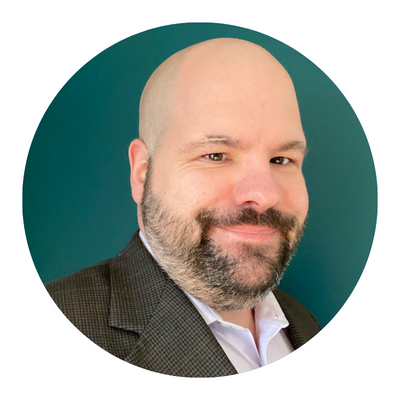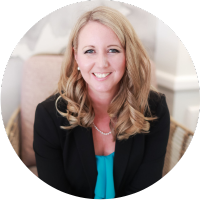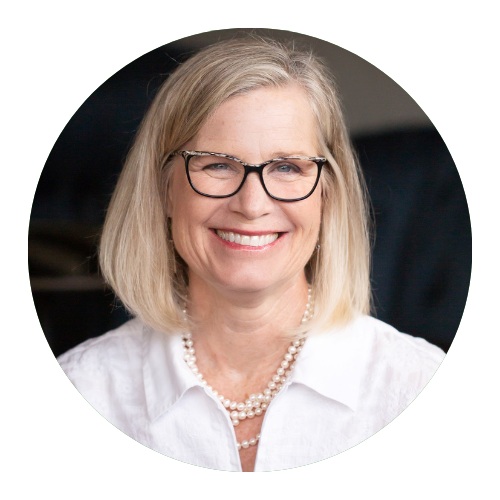How to Start an RIA
- Introduction Your Firm, Your Terms: How to Start an RIA
- Chapter 1: Your Terms: Preparing to Start Your RIA
- Chapter 2: Your Firm: How to Become a Registered Investment Advisor
- Chapter 3: State & SEC Initial RIA Registration
- Chapter 4: Preparing to Launch Your RIA
- Chapter 5: Actually Launching Your RIA
"Without leaps of imagination or dreaming, we lose the excitement of possibilities. Dreaming, after all, is a form of planning."
Your Firm, Your Terms: How to Start an RIA
Proven Success
Written from the vantage point of those who’ve been to the other side of the mountain, this guide has been drafted in the blood, sweat, and triumphant tears of those who’ve not only been there, done that—but done it profitably.
Curious how profitable? Check out XYPN Radio Episode #347 and hear from XYPN founders Alan Moore and Michael Kitces the latest data-backed story of an XYPN firm's journey as told from the average growth in revenue, client profitability and client relationships in our annual Benchmarking Study.
"I'm tired of hitting roadblocks within this industry while watching clients constantly get underrepresented. I see a gap in financial planning that no one has filled, so I'm going to start my firm because I know I can do better!"
Starting your own firm is extremely exciting. After working within the strict confines of existing rules and regulations—many of which seem outdated and impractical—there is nothing more freeing than going into business for yourself. It can also be stressful, but by following the steps outlined here, you can begin the road to a smooth and successful transition to being your own boss.

Ep #347: XYPN’s 2022 Benchmarking Study Highlights: A Review with Alan Moore and Michael Kitces
Your Terms: Preparing to Start Your RIA
So, you’ve decided to start your journey toward fee-only, independent RIA firm ownership (or as we like to call it, your firm on your terms).
Congratulations!
Now what?
First, an exercise. Get a piece of paper and write: It Can Be Done.
Be sure to add the period because there are no ifs, ands or buts that come after—even if it seems like it along the way. Now, pin it up somewhere you can see it. Good.
Next comes the fun part: planning. Who here doesn’t love that?
Start by dreaming. While you’re at it, dream big. Dream the dreams of someone who doesn’t know better and anything is possible. We’re talking heart’s desire.
What does your ideal life look like?
How do you structure your time?
Where do you live?
Where do you work?
Who do you serve?
What does success look like?
What are you most passionate about?
Who are you when you look in the mirror at the end of the day?
How do you feel?
Believe it or not, the last point above can really help to define your goals. If you answered “happy,” push further. Does “happy” feel like joy? Satisfaction? Pride? Excitement? Exhausted from a day of productive work? Empowered? Confident? Worthy?
Write down your answers in the present tense. Other than that, there are no rules. If your ideal future includes wearing blue button-down shirts to work, cool. If you get stuck on any of them, put it in terms of making you feel your ideal feeling. E.g.: Working with clients in transition makes me feel empowered. Perfect!
Finished? Fantastic. These are your terms. What follows are the steps to build a financial advisory firm that reflects them.
"I'm done with the hustle culture. I no longer want to compromise my identity as an advisor or person. Instead, I want to build a lifestyle that works well for myself and my family while providing better value to my clients."
Step 1. Build Your Runway
To help determine whether you’re one month or one year from preparing to launch, check your runway. Do you have enough resources to cover living, launching, and running expenses for 1-2 years?
Not sure? No problem. This will help: First Year Budget Projection. It provides an overview of what you will need to launch and run your RIA with snapshots of high, medium, and low-launch cost case studies.
It also includes First Year Budget Worksheets to input business and personal expenses as well as project financial planning and revenue from assets under management (AUM).
The balance between the two will help pinpoint your starting position on the runway. It will also help you understand the resources needed to get you from where you are to where you want to be.
The last tab provides 3-Year Revenue Projections—which can be both inspiring and very helpful if you’re talking this through with a significant other.
Once you’ve given yourself (or have been given by a spouse) the greenlight, it’s time to start building out the body of your financial advisor “craft!”
Pro Tip: Still concerned about making financial ends meet? Get resourceful!
Contact your state or regional Economic or Small Business Development Center or Women’s Business Center (WBC). Both programs are supported by the U.S. Small Business Administration to help aspiring business owners get started with resources available in their area.
They may offer free technical assistance, some elements of business training, grant writing assistance, and small business loans. They also may be able to recommend specific grants offered by state entities to drive innovation and enthusiasm for businesses in specific sectors.
-
→
Subscribe to XYPN Radio
-
→
Subscribe to XYPN’s Advisor Blog
-
→
Gather insider insights from webinars and XYPN’s YouTube Channel
-
→
Join XYPN’s VIP Facebook Group
-
→
Connect at conferences like XYPN LIVE or meetups
-
→
Attend seminars where you’ll find relevant content and like-minded advisors
-
→
Connect with a Success Strategist - your guide for all things XYPN
"I stumbled across XYPN Radio and it just blew the lid off for me. I realized through the podcast that there are ways to give advice—to be an advisor, to actually do planning—to not just sell insurance and not just gather assets. And it was like wow. This light went off for me. And I was hooked. From that point forward, I just soaked up everything I could get my hands, ears, and eyes on. And I was like, ‘Oh yeah. This is what I want to do.’”

Want to take this content on the go? Download the PDF version!
Your Firm: How to Become a Registered Investment Advisor
Step 2. Before Departure
Check for restrictions
As you reach the completion of your runway, it’s time to run some pre-departure checks.
This is full-stop important.
If you’re transitioning from a firm and envision inviting clients to go with you—or even plan to notify them about your new firm, check two very important items before you do anything:
-
Your employment agreement
-
The Broker Protocol Directory to determine whether your firm is a registered member
Similar to checking for airline baggage restrictions (but way more important—especially if you want to avoid a lawsuit), it is imperative that you check your employment agreement for any restrictions your employer may have placed on you regarding who and what information you can “carry-on” with you.
It has become increasingly more common for firms to protect their “assets” by including non-compete, non-solicit, or non-accept clauses (collectively “NCAs”) in their employment agreements. So, it’s advised you look for these clauses in your agreement before taking any action with clients obtained through your current employer.
Is Your Non-Compete Binding? Helpful Tips for Transitioning Advisors will help you understand the implications NCAs have on your client engagement activities post-employment and whether they are enforceable. As always, if it is not crystal clear what you can and cannot take “aboard,” legal counsel is recommended.
If you are transitioning from a Broker-Dealer or Registered Investment Advisor firm that is a registered member of the Broker Protocol, there are protections that allow you to take client names and contact information (but NOT account information) with you.
"As a condition of employment, everyone in the bank from the janitor to the CEO was required to sign a non-solicit agreement. So that meant that we couldn't talk to any past clients or current clients for a year. We couldn't take any of them on. So that was a hurdle that I had to jump and it was very tough to have some really close relationships with clients. I had a client whose husband passed away from COVID and I was just hand-holding her, trying to make sure that she had everything in place before I left. And there are a lot of clients like that that I so wanted to work with, but I wasn't able to, so I had to start from the ground up."

Check the “Exits”
Compensation & Compliance
You probably don’t have to be told that having a thorough understanding of your current and future compensation and fee revenue—and the impact of transitioning from commissions or insurance trails to a fee-only structure—is very important when crafting a feasible exit strategy.
There are a few things to consider when factoring in your resources and timing. First, let’s unpack some baggage you may be holding onto regarding your current income structure with a little exercise we like to call:
IS THE DEVIL YOU KNOW REALLY BETTER?
If you have a book of clients generating revenue from commissions or trails, do not underestimate the powerful pull of sticking with “the devil that you know” pay structure.
It feels consistent, dependable, and secure. (Not hard to understand why someone who deals in securities embraces a structure that reinforces itself.)
But at what price? Financially, mentally, emotionally, and spiritually?
It begs some questions:
It may be what you know, but does it know you?
Does it allow you to serve who you want, how you want?
Is it in alignment with your values, passions, and goals?
Are you paying out more than you are gaining in this relationship?
Is it really your only option as a financial advisor?
If you answered “no” to any of the above, then perhaps letting go of the devil you know may be easier and less scary than it has seemed in the past.
Feel better? Good. Let’s shine a light on that “devil” you don’t know.
Fee-only revenue free from expensive advisory firm or brokerage payouts can not only be profitable, it has also proven to grow quickly—especially when you and your clients are the ones benefiting from your hard work—and not paying out on it.
We think you'll agree, the easiest part of this whole journey will be scratching out payouts!
Need a starting point to plan your future revenue structure? Run reports based on your current client revenue. Separate the revenue into various evaluation categories so that you can map future revenue streams to them. Then plan your revenue “routes.”
Timing is everything
You’ve let go of your fear of the unknown (to the best of your ability anyway) and embraced the devil you don’t know. You’ve got a plan to generate revenue. Time to choose your departure time.
Financially, you may want to time departure after a quarterly bonus (or two) if you plan on funding part of your launch with it. The other very important thing to consider when it comes to timing your departure is compliance.
As you begin the process of registering a new firm, it’s easy to place your existing firm’s compliance program on the back burner—especially if you’ve been somewhat removed from the process or have been trained to fear it.
Now is the time to move it to the front burner and consider the compliance implications of starting your own firm.
If you are currently employed by a broker-dealer, RIA, or insurance company, then your current employer will have a compliance department responsible for your supervision. They will have access to your CRD Record via FINRA Gateway, which is the same system that you will use to register your new firm.
But don’t worry—your current firm will not be notified of your registration process until you file your Form U4 which can trigger notification to any existing RIA or Broker Dealer with whom you are actively registered.
Form U4 is the Uniform Application for Securities Industry Registration or Transfer. Representatives of broker-dealers, investment advisors, or issuers of securities must use this form to become registered in the appropriate jurisdictions.
Finally, if you are trying to time your departure with state registration timelines, RIA firm registrations at the state level can vary, but generally average 6 -12 weeks.
Starting with at least $100M assets under management? You may be able to skip state registration and go to SEC registration, which tends to occur within 45 days of filing your Form ADV.
"Firms will always say, well, compliance is a huge bear. It's just going to be really hard to maintain a compliant firm and it's a lot of work and whatnot. But 90% of the compliance problems you deal with as a dual-registered person come from the brokerage side, not from the RIA side. And so I thought I was going to burn up a quarter of my week going forward on compliance tasks and operations. I got 30% of my time back after the transition because once you're working with a tech stack and a system and a process and compliance, all stuff that is by you, for you, it's way easier than working through systems built for someone else to monitor you as your way of doing business."

Heads up: Your existing firm has 30 days to file a Form U5 (termination) for you following your resignation. In states that don’t allow dual registration, or with a firm that is not supportive of allowing you to be dual-registered as part of the transition, a compliance officer that is slow to terminate an IAR could create an additional unanticipated delay.
Pre-departure Checklist
Restrictions
-
Check Employment Agreement for NCAs
-
Check the Broker Protocol Directory to see if your employer is registered and confirm what information you can take with you
Registrations
-
Determine if you're required to register as an Investment Advisor
In a nutshell, if you intend to offer planning and advisory services that include investment or securities advice to others for compensation, you are considered an Investment Advisor (IA) and are required to register with the appropriate jurisdiction(s) before engaging in the delivery of any advisory services.
In addition to registering as an Investment Adviser, you are required to register as an Investment Adviser Representative (IAR) under your RIA.
If you expect to have at least $100M of regulatory assets under management within 120 days of registration, then you may be able to register directly with the SEC.
Qualifications & Requirements
-
Meet all qualifications
As part of the registration process and requirements of forming a Registered Investment Adviser firm, you must meet certain examination requirements to qualify as an investment adviser representative under the RIA.
This starts with the Series 65 Exam (Investment Adviser Law Examination) requirement. -
Fulfill all requirements
There are three options for meeting the Series 65 exam requirement. If you have not previously passed the series 65 or have but have not maintained an active registration with an RIA during any period within the last 24 months, one of the three options below must be fulfilled in order to pursue registration:
-
Take and pass the Series 65 exam (investment adviser law examination)
-
Hold one of the following qualifying professional designations in good standing:
-
Certified Financial Planner (CFP)
-
Chartered Financial Analyst (CFA)
-
Chartered Investment Counselor (CIC)
-
Chartered Financial Consultant (ChCF)
-
Personal Finance Specialist (PFS)
-
-
Have an active Series 66 and evidence of passing the Series 7
-
The Series 7/66 combination is most relevant for those who are (or were previously) registered with a BD or Hybrid BD/RIA and have been actively registered within the last 24 months. In certain states and limited cases, you may be able to request an exam waiver based on extensive (and still relatively recent) relevant experience in the securities industry. Each state that provides this option has a process for requesting, in writing, the details of your background that warrant requesting an exam waiver, and our compliance team can help you navigate that if appropriate.
-
-
Notification & Celebration
-
Give notice!
Only you know when you’re ready to notify your employer of your departure. (Hint: there is never a perfect time—and it may come after Step 3. The good news is when it’s time, you’ll know.)
When you are ready, keep it short and sweet. This is a notification, not a novel and you do not have to explain why this decision is best for you. Save that for discussion with family and friends when you celebrate your first steps toward freedom. -
Do a happy dance!
Congratulations! You are one giant leap closer to having your firm on your terms.
Step 3. Build Your Craft
Once your Pre-departure Checklist is completed, it’s time to build out the “body” of your firm.
Download your First Year Business Plan and grab the firm terms you wrote down in Chapter 1. If you haven’t started dreaming yet, no problem. No time like the present. Dream big and fill in the first box of your plan.
"I take my tablet and I go to the gym and I'll work for an hour or while I'm walking on the treadmill and I get to do that in sweatpants. So for a guy who wore a suit every day for 30 years, this is wonderful.”

One box checked off! Feels good, doesn’t it? Keep that ideal future in mind as you complete your plan. If you get stuck on any of the items, check back in with it and see if they match up. That is an important part of the “who” you want to be.
Remember: identity is destiny. Once you know who you want to be, what to do flows from it.
Your Guidance System
A good business plan acts as a working navigational tool that guides you through every stage of business management. Think of it as a GPS that establishes where you are and where you’re going, then provides an ongoing route between the two.
Leveraged effectively, it will be your true north—performing as a compass, map, tracking system, course-correct, and estimated time to arrival.
This Business Plan is unique in that it’s designed to help advisors define your “who” as well as your “how.” It will help you create a mission-driven firm that flows from its core values. You will find that codifying those values can result in a defined client experience that you can repeat, market on, and pass along to employees.
As you work through this plan, keep it high level. We’ll drill down on the details in Chapter 4 when you taxi toward takeoff.
"I was really intentional with what I wanted to build, how and why. Pure solo operation, 50ish clients, have plenty of flexibility throughout most of the year in my time, in my days. And that's what I got. I thought I'd take me like five years to get there. I thankfully got there in two.”

The riches are in the niches!
Take it from the tried-and-true crowd and say it out loud: The riches are in the niches!
We’ve said it from the beginning (XYPN Radio Ep #11: Crisis of Differentiation and the Niche Imperative as a matter of fact) and have heard successful advisors echo it ever since. Differentiating yourself based on a niche will grow your business faster and make you happier.
When it comes to selecting your niche for the business plan and understanding the benefits of marketing to it, consider basing your niche on:
-
→
YOUR IDEAL CUSTOMER PROFILE
Whether or not you were motivated to go independent so you could have the freedom to serve whom you want, how you want, here’s your chance to pick your niche based on your ideal customer.
Not sure who that is? It may help you to listen in on conversations with XYPN members who chose their niches based on the clients they wanted to work with—and have enjoyed fulfilling work and rapid growth because of it:
Ep #223: Going All-In on a Niche and Ramping Growth - The Career of Adam Cmejla
Ep #138: How a Niche Serving Pharmacists Has Provided Explosive Growth - The Career of Tim Baker
"About four months after launch, I went 100% in on my niche—serving Childfree people—and changed my company's name to Childfree Wealth. I researched the niche and wrote a book entitled: Portraits of Childfree Wealth. I pitched the book to a bunch of press outlets, and on the same day MarketWatch and Wall Street Journal did a feature piece on childfree finances. From those two articles alone I got 15 prospects (6 of which became clients). Since then, it has been nothing but an upward trajectory. I have to admit that XYPN and Kitces are right, the riches are in the niches."

-
→
YOUR EXPERIENCES
Perhaps your experiences will help you pick your niche, like these XYPN members who turned their background in taxes and the military into revenue powerhouses:
Ep #354: The Impact of Tax-Optimized Financial Planning: A Conversation with Joanne Burke
-
→
YOUR PASSIONS
If you ask others how they chose their niche, some will tell you passion drove them—from serving the LGBTQ+ community to a love of tattoos.
Ep #320: Impacting Over 100 Clients in Two Years: An Interview with River Nice
For others, it was a combination of experience and passion that helped them choose. One XYPN member chose “women in transition” as his niche after growing up watching his single mother struggle for years after her divorce. It was important to him that he help other women avoid the heartache she experienced over her financial struggles. Now he has a thriving business AND helps others in a way that’s meaningful to him.
"My niche is those experiencing grief, likely single for the first time in a long time, and nearing traditional retirement age. The grieving part is because I lost my best friend which forever changed the trajectory of my life. The rest is through training and past client experience, understanding with whom I work best."

The Name Game
Finished your Business Plan? Fantastic! Here’s a checklist for you:
-
Feeling good about it?
-
Ran it by your mom, a partner, friend, colleague, or two?
-
Does it look good on you?
-
Does it fit you?
-
Will it serve as a working navigational tool?
If you’re all checked off, let’s circle back to your name. Does your original idea still fit? Did you forge a new one? Need help?
There are as many ways to “namestorm” as there are names, find the process that fits you to find the name that fits you. Some things to try/keep in mind:
-
→
Search other RIA firms for inspiration (or competition)
-
→
Try word clouds that are associated with your niche, your passions, how you want your clients to view you—remember a name is your first communication about who your firm is and who it is for
-
→
Try namestorming with friends and family—see what they come up with. At the very least it will be entertaining!
-
→
Pick something that gives your business room to grow and doesn’t limit you to your current offering/location/size
-
→
Keep it on the shorter side—no one wants to type a paragraph into their URL or email
-
→
Keep to common spelling (although Financial Advizerz maybe looks cool, you’ll miss out on being found through organic search)
-
→
Check XYPN’s Advisor profiles to confirm there aren't other XYPN members with the same name
-
→
Include "financial advisor" or "RIA" too when searching for your name
-
→
Check for domain availability—if it’s available, grab it!
"7 Saturdays is my favorite analogy for financial independence—every day is Saturday because work is optional at some point, so people can choose what they do with their time rather than doing what they have to do for a paycheck. That's my targeted niche: folks who want to achieve early financial independence and all the planning considerations that go with that."

Pro Tip: A name is like an ingredient in your brand “recipe.” It doesn’t have to say everything about you, but it is the first “flavor” anyone interacting with your brand will experience.
C.Y.A.
While doing a domain search for your firm’s name indicates whether the domain is available or not, it is not the only (or best) way to confirm whether or not there is another firm anywhere* out there with your name performing similar services.
*It used to be that you were protected by geography if no other business in your area offered the same services. With firms conducting business virtually, however, your “area” is the world wide web, and they can challenge you.
Best practice to protect from confusion (at best) or litigation and possible name change down the road:
Search the United States Patent and Trademark Office (USPTO) database to ensure your mark (name) is available.
Registration of a trademark is optional in the United States. However, a trademark registered with USPTO provides broader rights and protections than an unregistered one. It is valuable to confirm no other financial advisory firm shares your name even if you decide not to register it.
Fun Fact: A trade name is how you distinguish your business from others. It must usually be registered in your state or, in some cases, in your town.
A trademark, on the other hand, distinguishes your goods or services from others. It:
-
Identifies the source of your goods or services
-
Provides legal protection for your brand
-
Helps you guard against counterfeiting and fraud
-
Purchase a domain name
-
Register trade name with your state
-
Register trademark with USPTO (OPTIONAL)
-
File entity paperwork with state, if necessary
-
File for federal EIN
-
File for state EIN, if needed
-
Apply for a local business license
Step 4. Grab Your Co-Pilot
A wise RIA owner once said, “A journey of a thousand miles to fee-only financial advising begins with joining XYPN.”
Are you ready to join XYPN and take your first steps toward freedom? Have you:
-
Completed Pre-departure Checklist
-
Drafted Business Plan
-
Downloaded All-in-One-Checklist
The good news is this is an All-in-One list—as in all the steps between where you are and where you want to be— and like any journey, focusing on the step in front of you and not the staircase will help keep you mindful and present as you take each step.
Also, know that each step has been designed with your success in mind. As your co-pilot, XYPN will be there every single step of the way! -
Downloaded XYPN’s Membership Guide
In addition to a robust tech stack with every tool your firm needs, you’ll quickly note that we have solutions, courses, coaches and guides for every item you see on the All-in-One Checklist.
Checked off all of the above? Fantastic. YOU ARE CLEARED FOR TAKE OFF.
It’s time to grab your co-pilot and join XYPN. (Questions? Our Success Strategists are standing by!)
Next stop, freedom.
Check out these resources as you plan for your new fee structure:
1. Read The 411 on Fees for Firm Owners. Get help figuring out how to structure your fees profitably.
2. Order The Monthly Retainer Model. Learn about providing profitable fee-only financial services.
3. Listen to XYPN Radio Episode #357. Hear the 5 things XYPN member Jake Northrup, CFP®, CFA, CSLP®, did to grow his revenue to $500k in 3 ½ years.
Kick-off Call with Member Experience
Exhilarated? Maybe a little scared? All natural emotions when it comes to unknowns. That’s what XYPN is all about: turning those unknowns into knowns, removing the scary, and setting you up for success.
Got questions? Great. Bring them to your Kick-off Call with Member Experience. They will ensure you’re set up for success on your new platforms, help you dive into all of the benefits of XYPN, and connect you with other new members.
Bring your questions—we’ve got the answers!
State & SEC RIA Registration
How to Handle IR Like a Boss
We want you to wear your Chief Compliance Officer cape (because that’s what it will feel like) with confidence.
As an overview, here’s what you have to look forward to with state registration of your Registered Investment Advisor (RIA) Firm.
Step 1. Establish Your FINRA Gateway
Step 2. Fund your FINRA “Ebill” account
Step 3. Prepare registration application (filed with SEC and state)
Step 4. File Your Application
Step 5. Work Through the Regulatory Review Process
Step 6. Wait for approval
Pro Tip: Stay hydrated. Seriously. It’s going to take a minute. But it will be worth it, we promise—and so do many of those who came before you!
Crew Up
Another wise RIA owner once said, “Every pilot is only as good as his crew.”
While you can fly compliance solo, do you really want to?
Like so many before, you may find that hiring a compliance solutions partner to have your back brings you peace of mind that’s worth every penny—especially if the steps above can be made easier with templates, examples, explanations, and a real person dedicated to holding your hand and double-checking your work.
If you’d like to partner with a team of real people who offer customized, simplified compliance support with a smile, look to XYPN Compliance to help you every step of the way during your state or SEC registration and beyond.
Compliance Conversations
Watch How to Manage Compliance as a Firm Owner and learn from XYPN’s Managing Director of XYPN Compliance, Travis Johnson, IACCP®, and XYPN members Corey Beal, CFP®, and David McPherson, CFP® who’ve navigated compliance in their own firms.
"XYPN Compliance team was a critical resource during the initial registration process. From the templates to the open office hours, they were there every step of the way. The Compliance team had a thorough understanding not just of the paperwork that was needed, but the timeline and work-style personalities of the regulators in many states to be able to communicate expectations during the approval process. The templates and resources were extremely helpful in expediting registration and increased my confidence in my compliance program and the initial registration process. XYPN Compliance is an invaluable resource and I would highly recommend them for new firms."

Basic Registration $1900
Investment Adviser registration with guided support and templates to get your firm registered with your primary state or the SEC as efficiently as possible.
-
Form ADV & U4 drafting and submission
-
Creation of Client Agreements, Privacy Policy, and Compliance Manual
-
Templates for your Business Continuity Plan, Data Security Manual, and Code of Ethics
-
Templates for additional required state documents for firm registration
-
DIY guide for ADV amendment filing
-
Up to two hours of 1:1 consulting and support during the regulatory review (additional support billed hourly)
-
Weekly Compliance Drop-In hours
Enhanced Registration $2700
Enhanced Investment Adviser registration with more dedicated 1:1 support throughout the entire registration process with your primary state or the SEC.
Everything included in our Basic Registration plan plus:
-
Creation of tailored Business Continuity Plan, Data Security Manual, and Code of Ethics
-
Creation of additional required state documents for firm registration
-
ADV amendment filing within 30 days of firm approval
-
Unlimited 1:1 consulting and support during the regulatory review
Complete First Year Compliance $6000
Enhanced Registration with the following Compliance Program Development & Implementation Support:
-
Unlimited 1:1 consulting and support throughout your first year
-
Setup and training on Smart RIA for compliance task management
-
Development and implementation of compliance program
-
Support with build out of compliance processes and best practices
-
Audit prep support and guidance
-
First additional state registration or notice filing
-
First additional IAR registration
XYPN Compliance RIA Registration Services
Join a Preparing for Registration Call
These weekly calls, hosted by the Compliance team, will help you jumpstart the registration process and get you well on your way with the first steps toward registering your firm.
Your team will cover requirements for starting the registration process as well as discuss compliance considerations as you determine your Services and Fee Structure related to financial planning, investment management, and other common services.
Initial Registration Office Hours
Every Wednesday our compliance experts are available to answer questions on all things compliance:
-
→
Initial registration process and pitfalls
-
→
What issues you should be working on
-
→
Typical compliance documents
-
→
What to think about regarding fees and services
-
→
Any nuances your particular state presents
To understand all things compliance beyond the initial registration process, calculating assets under management, and what to expect with your annual ADV Update, download The Essential Guide to RIA Registration.
Pro Tip: The best action to take when you serve as your own CCO? Continue educating yourself, seeking out resources, and asking questions!
Preparing to Launch Your RIA
Alright. You’ve created and completed a lot of forms (looking at you, Form ADV!), applied and registered for all the things, and figured out some logistics.
Time to taxi down your runway!
Have you been checking off your All-in-One Checklist? If not, now’s the perfect time to get that dopamine hit from completing tasks (it’s also a great way to ensure you don’t skip a step).
Go old school, print it out, and get yourself a fancy pen for extra satisfaction as you check off those to-do boxes. You’re further down the list than you might think!
Check Your Instruments
To get all of your business management instruments operating at optimal capacity, our Member Experience Team will guide you through a month-long program focusing on setting your business, processes and planning up for success.
XYPN Academy provides all of the preparing to launch help you need through calls, on-demand courses, templates and other content necessary to help optimize your technology, sales, marketing, financial planning, and business and practice management.
Put me in, coach!
Need a little extra guidance? Schedule time with an XYPN executive business coach who can customize support to your needs and get you on track to leverage every opportunity possible before you “wish you’d have thought of that.”
Check Your Support Systems
There is a reason “community” outranks other XYPN benefits 3 to 1 in surveys.
Your support systems will make all the difference between a smooth and a turbulent journey.
Whether you learn from others’ experiences and expertise, feel “seen” by someone who’s been there, or gather all the “boots on the ground” 411 on best practices, you will be a better advisor if you connect. Trust us on this one.
Work with your Member Experience team to familiarize yourself with all XYPN has to offer, and then plug in—because you may be independent, but you’re never alone with our community!
-
→
Introduce yourself in the Member Forums
-
→
Post your questions in the VIP Facebook Group
-
→
Share your excitement in a Mastermind Group
-
→
Join a Launcher Accountability Group
-
→
Join monthly Fireside Chats with coaches
Other great places to meet advisors that can help you stay on top of trends, gather advice from someone who’s encountered a similar scenario, or simply make a new friend, include associations whose memberships are included with XYPN:
-
→
National Association of Personal Financial Advisors (NAPFA)
-
→
Association of African American Advisors (Quad A/AAAA)
Get Your (Business & Financial) Ducks in a Row
While building your network, taking care of a few more pre-launch items is essential. If all of your compliance and registration work is complete, now is the time to open a business bank account and apply for a credit card.
It’s also a good idea to revisit your business plan. Do you need to make any changes? Do you need coaching to help you plot the best possible course?
Before you can advise others on what to do with their money, it’s critical to ensure you can practice what you preach—make sure your financial house is in order before moving on to clients. Is your First Year Budget on track?
Pro Tip: If you find yourself down the road experiencing an imbalance between working on your business rather than in it, consider outsourcing and free yourself up to work on the profitable aspects of your business instead of the business itself.
Create Flight Paths That Promise Smooth Journeys
With any business, the work you do upfront can pay dividends. (Yes, that was absolutely intended).
But seriously, start by checking out the robust tech stack included with XYPN membership that we sourced, road tested and continually review for optimal performance. You’ll find everything you need to succeed—and a team to help get you up to speed!
Taking time to focus on a few business practice items now can save you considerable time and money later. Some kickstarters:
-
→
Automate and optimize your technology solutions
-
→
Establish systems
-
→
Identify and put best practices into place
For helpful productivity tips that are easy to implement and really work, learn from XYPN members, Raquel Hinman, CFP®, and Michael Reynolds, CFP®, CSRIC®, AIF®, CFT-I™: Automate, Optimize, Maximize: How to Increase Productivity in Your Firm
If you haven’t already, now’s the time to get your hardware in order. Your phone, computer, and high-quality scanner/printer/copier.
Register your website domain and email address if you haven’t already. While you're at it, set up email and social media archiving so you don’t have to deal with compliance issues later. XY Archive is a great place to take care of this.
It’s up to you, but you’ll need to decide whether to go 100% in the cloud or purchase a server. These days it’s easier than ever to utilize the cloud, but make sure you’re choosing the right vendors to keep your client information compliant and secure (2FA is always a good sign).
Many other types of software can help your business. These are some of our favorites, but to cover all the bases, make sure you have:
-
→
Client relationship management (CRM)
-
→
eSignature software
-
→
Online scheduling and Virtual meeting software
-
→
Accounting/payroll/invoicing system(s)
-
→
Payment processing software (see AdvicePay)
-
→
Financial planning software
-
→
Email newsletter management
-
→
Social media management
Also, don’t skimp on system backup for electronic data and software — you’d hate to lose all of your valuable assets.
Pro Tip: Utilize password management software to keep all of your passwords secure—and available. The last thing you want is trouble accessing your accounts.
Financial Planning for the Financial Planner
It will be very helpful to develop an initial financial planning process timeline, determine an effective client fee structure for services, and establish a standardized reporting package for client meeting deliverables.
-
→
Prospect to Client Transition
-
→
New Client Onboarding
-
→
Get Organized Meetings
-
→
Client Meetings and Follow Ups including notes and communications
-
→
Financial Plan Delivery
Need help with these? No problem. XYPN has a financial planning process and workflows that you can customize.
Pro Tip: Check out our templates and agenda-makers for client emails and meetings to save time and ensure standardized communication and branding.
Viva Consistency!
You’ll find that creating an annual Client Service and Communications Calendar to ensure you are consistently creating touchpoints with your clients and prospects is incredibly helpful.
There are several scheduling platforms available that work well for both. Not sure which will be your best fit? Check in with the XYPN forums, your mastermind group, or XYPN VIP Group to see what platforms others recommend that could be a good fit for you.
Once you see how quickly others with the same experience respond and how thoughtful and supportive they are, you’ll find yourself going back for more insider advice—for everything!
Pro Tip: You’ll quickly find a “better together” mentality amongst your XYPN peers that's inspiring and refreshing. Listen: Ep #351: The Gift of Community – Why Members of an XYPN Mastermind Group Are Better Together
Codify Your Client Experience
It’s easier to keep an existing client than to find new ones, so dedicate time to ensuring you can consistently deliver exceptional service.
Codify your client’s experience from prospect to ongoing client management and create financial planning templates that streamline the client experience.
-
→
Scheduling, post-meeting notes, and follow-up emails
-
→
Agendas that identify key steps and messages to implement before, during, and after meetings (a.k.a. the Discovery, Introductory, and Get-organized meetings)
Plenty of AI plug-ins can help you take notes during meetings, remind you to follow up, check your spelling and grammar, and more. Don’t be afraid to use them! Your clients will appreciate the extra care.
Choose Your Own Adventure: Investment Management and Tax Services
As you close in on take-off, just a few more deck checks:
Investment Management:
Will you provide investment management services?
If YES:
-
Connect with XYPN Invest to discuss engaging them as your TAMP solution
-
Establish a relationship with a third-party custodian (XYPN’s partnership with Schwab offers many benefits, but it’s your choice!)
-
Register/plan to attend a DFA virtual conference (if desired)
-
Create a fee schedule for investment management services
If YES, but you choose not to engage a TAMP:
-
Establish an investment policy process for initial security selection and ongoing performance monitoring; create model portfolios for managed accounts
-
Establish an investment philosophy
-
Purchase portfolio management, account aggregation, rebalancing, and risk tolerance software
-
Create a standard investment policy statement template
If NO:
-
Decide if you will:
-
Advise clients to self-manage portfolios or
-
Find an investment advisor to refer to if desired
-
If A, establish an investment policy process for initial security selection and ongoing performance monitoring. Create model portfolios for client-managed accounts.
Tax Services:
If you are not transitioning from the tax world already, will you offer tax prep or planning?
If YES:
Great! It can help define your niche/differentiator/positioning.
Take Time, Make Time for Marketing
Here you are—ready for take off!
You’ve done all the diligence. You’ve codified, calendared, and created everything that will streamline your client experience.
Next on the checklist:
-
Take a moment to feel good about all you’ve accomplished.
Seriously! You’ve come a long way and have a LOT to offer and be proud of.
Now, if only your future clients knew what you have to offer and be proud of.
Yep, you see where we’re going with this. Now that you’re ready for clients, it’s time to talk about attracting them. That’s right, marketing.
For successful RIA firms, marketing can make a huge difference between having only a handful of clients or finding your groove and connecting with your ideal customer served by your niche that turns on the customer tap.
Build it and they will come, right? Well, not exactly. They have to be aware of you first. You can build the greatest baseball field practice but if they can’t see you through the cornfield, they’ll just keep on driving.
Fortunately, XYPN has all the resources you need to build a solid marketing plan that gets you seen, heard, and engaged.
Created specifically for advisors, our on-demand courses, webinars, templates, and roundup of marketing blogs are all focused on the most impactful steps you can take to gain traction with your ideal customer.
As an overview, here are steps you can take to build a strong customer pipeline:
Step 1: Identify Your Ideal Customer
Imagine them as a person—what’s their background? What’s on their mind? What problem or stress are they trying to solve or alleviate? What motivates them and what story can you tell that connects them to you in a way no other can?
Step 2: Build Your Brand & Positioning
Great news: you’ve got a headstart on defining who you are and what your position in the market is with your Niche and Business Plan! You’ll be building on these as you crystalize your brand identity so you can communicate with a clear and consistent voice that resonates with your ideal customer.
Step 3: Learn the Basics
For a crash course on outbound versus inbound marketing and which is better for RIA firms, read: Marketing v. Prospecting: Knowing the Difference, and Developing a Plan. Also, Own Your Niche: Inbound Marketing for RIA Owners.
Step 4: Map Your Ideal Customer’s Journey
Our Marketing Funnel Template helps you map your customer's journey as they move through your funnel from the first touchpoint to engagement. It also lays the groundwork for Step 5.
Step 5: Create a Communication Plan
Create a strategic plan with a calendar and messaging bullets that maps to your Marketing Funnel and follows the FRED model:
-
Familiarity: tell a story that makes your customer feel “seen” and understood because it’s what they know
-
Relevance: message in terms of what hits closest to home for your ideal customer and resonates at a personal level
-
Esteem: build likeability, trust, and belief: the three dominoes which cascade into one another until your customer finds themselves not only wanting to engage with you, but also wanting to invite you to their next barbeque!
-
Differentiation: builds on the equity of your niche to define the value only you can provide them
Step 6: Create Content Mapped to Your Marketing Funnel
Create at least one piece of content for each stage in your customer’s journey: Awareness, Consideration, Decision to get you off to a running start.
Step 7: Plan to Execute Ongoing Content
Add “Create Content” time to your calendar—as often as you can initially—so you build up your content “library” that acts as both a resource for your customers and steam for your SEO—the engine that helps you be seen through the “cornfield” and drives traffic straight to you!
Pro Tip: Marketing on a budget? Read: 39+ Free Marketing Tools to Grow Your RIA
"I think one of the-the best investments I made really early on was my website. It was expensive, but it's a great website and it's very clear what I do, and I think it gives a really good sense of what it's actually like to work with me. And so by the time clients actually get to a prospect call with me, I mean, they're ready to go. They're so excited. They're like, ‘I've been looking for this!’ But oftentimes they've met with a couple of other people before talking to me, and nine times out of 10, they're like, ‘Oh my gosh, you blew the other people out of the water."

Wondering what to fill in the “Convert” portion of your Marketing Funnel Template?
The great news is you can discard plans for battle cards and other hard sales tactics. It’s time to KISS*! (Spoiler alert: this is the easiest part of preparing to launch).
On your Marketing Funnel Template in the Prospect Call Box write:
Be Myself
LISTEN
That’s it.
If you’ve effectively nurtured your prospect through your funnel this far, this will just be another conversation with them. The main difference is that you’ve been doing all the talking so far—through your blogs, website, emails, infographics, how-tos, webinars, and whatever else you’ve done to build the relationship.
Time to stop “talking” and start listening. Of all the sales tools you could use, this will benefit you and your relationship with your client the most.
Your goal in this conversation: connect with them as a person. The rest will follow.
How you connect with them is as unique as you are. (Yeah, that’s the “Be Myself” part).
As for the “Listen” part, it’s the first step in establishing a healthy, two-lane partnership, right? And if they feel you’re going to be a true 50/50 partner in this relationship right from the start—meeting them in the middle and working together toward their success—you’ll nail the sale without having to sell!
To do that, remember to KISS and focus on accomplishing two things:
Identify the Real Success
A good opening question is: “What does success look like for you in this relationship?” This will prompt the rational part of their brain into telling you what they think they think they want or need to solve for.
But you won’t get to where you need to in the conversation unless you keep digging until you reach the emotional root of their want or problem. Finances are so deeply entrenched in our socio, psychological and behavioral economics that it’s almost impossible to NOT hit an emotional nerve when it comes to solving for a financial need.
Think of it as a gold vein lying under surface ideas about what they think they want or need to solve for. You could waste time and energy focusing on all the ideas in the “dirt” around it—but you won’t hit the payload until you dig down and strike that vein.
If value needs to be addressed, ask them how much it will cost them if you don’t help them.
Pro Tip: Shortcut question that strikes at the “vein”:
“What’s keeping you up at night?”
Here’s an example between Sara, and her prospective client, Dave:
After exchanging some pleasantries and connecting over a shared love of a pastry shop Sara once visited in Dave’s hometown, Sara asked, “So what does success look like to you in this relationship?” Dave explained he needed to know if his 401k and portfolio were “going to be enough” and if not, what Sara would recommend he do to grow it enough to retire by 67.
Rather than crunching numbers or launching into a laundry list of services she could offer, Sara asked, “Is it fair to say that since you’re asking whether it’s enough, you’re concerned that it isn’t?” Dave replied, “It’s not that I don’t think I have enough for my retirement, I guess I’m more worried that Charlie has enough.” He went on to explain that his adult son, Charlie, would need extended care because of his severe autism.
Seeing a shift in Dave’s body language, Sara could see that they were getting to the emotional root of Dave’s “want.” She drilled down and asked, “Is Charlie’s future security keeping you up night?” Dave admitted it was, in fact, top of mind during his midnight mind marathons.
Sara acknowledged how stressful that must be and closed the deal with, “My background in navigating extended care will help us develop a realistic plan that gets him the security and you the sleep you both need.”
When Sara shared her pricing structure, all Dave saw was relief from his fear and a path to peaceful sleep—and it was worth every penny.
Read: 9 Sales Habits of Highly Successful Firm Owners for more in-depth components of a healthy sales approach.
"The phrase I repeated to myself probably 20 times a day for the first two years that I started my own business: ‘Feel the fear and do it anyway. Feel the fear and do it anyway.’ And no is never an answer. It's only a request for additional information."
.png)
Actually Launching Your RIA
You’ve been cleared for take-off!
-
Sign office lease, if needed
-
Buy business liability insurance
-
Apply for E&O insurance (Great news: You can cross “Source E&O Insurance” off your to-do list because XYPN offers a member-exclusive policy!)
-
Create your contingency plan including technology issues, location-specific issues, and human contingencies
-
Start with friends and family
-
Beat your own drum everywhere you go—from coffee shops to grocery stores! Practice saying who you are and why your services are valuable.
-
Start sending periodic newsletters
-
Start blogging at least once per week
-
List your firm in online directories such as Google Places, Yelp, etc.
-
Launch website (there’s a great story about his nerve-wracking “red button moment” one XYPN member experienced before publishing his new website after re-niching in XYPN Radio Episode # 341)
-
Announce the launch of your firm with a press release and social posts
“My BEST advice for new advisors to grow their business is to get out in their community via networking events, volunteer opportunities, etc. to make their name known and build meaningful connections that will eventually grow into a thriving referral network.”
Check in With the Control Tower
Schedule time every week for yourself (Make this a priority!)
Remember you’re human. There will be moments of doubt and straight-up nerve-wracking anxiety. Strong among them is imposter syndrome. (For real. Check out almost any episode of XYPN Radio for stories of the syndrome that racks new and experienced advisors alike.)
Recognize that you would not be experiencing these moments if you didn’t care. But you do—and that’s what makes your work so important and valuable to the lives you are making better. So, breathe it in and then let it go. Keep doing you. The rest will follow.
Remember you’re supported. Your Member Experience team and many other points of contact at XYPN are just a click, call or message away! They are eager to be there for you on this journey, so reach out and stay connected!
"My piece of advice to my younger self would be to just trust myself. I feel like on my journey a lot of times I had imposter syndrome. I didn't feel like I knew enough. And I was always trying to get educated, never felt ready. And, you know, I'm a faithful person. I believe that things happen for a reason. When I turn back and I look at the journey, I can see it clearly. So I wish that I had not wasted so much time trying to feel like I had it all in place. I wish that I had just trusted where I was at that point in time, that I had the skills, the education, the experience, whatever it was that I needed to take that next step because, it truly is step by step. I would just say to my younger self and to anybody else: trust that where you are is where you're supposed to be in the moment. And the people that you've met—you've met them for a reason and look for that opportunity to take that next step."

Want to take this content on the go? Download the PDF version!
Helpful Finds
From Our Blog
Stay up to date with what is new in our industry, learn more about the upcoming products and events.

The AI Revolution in Wealth Management: How Advisors Can Stay Ahead of the Curve

"How I Did It" Series with XYPN Member Chandler Fugate-Laus



